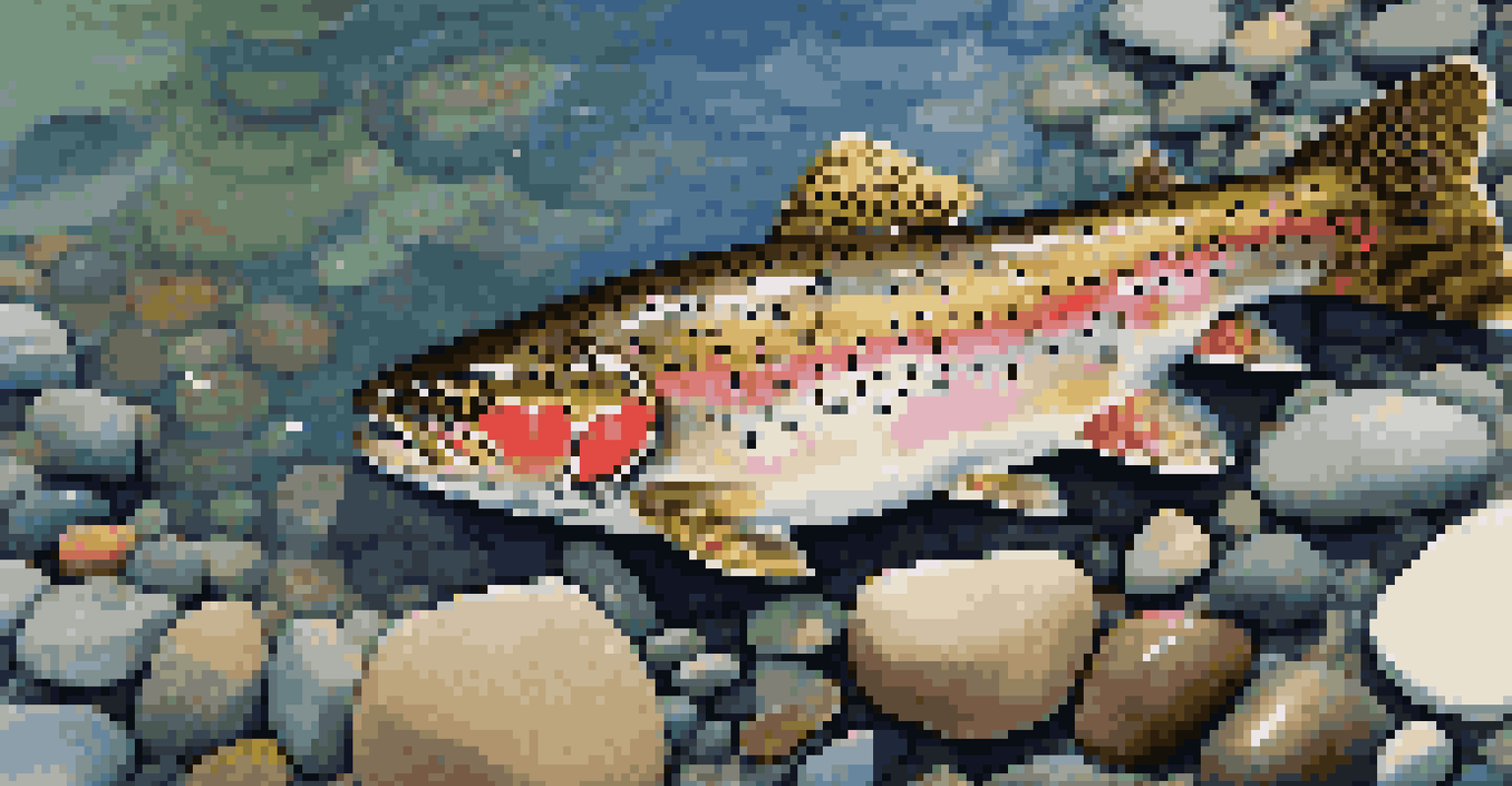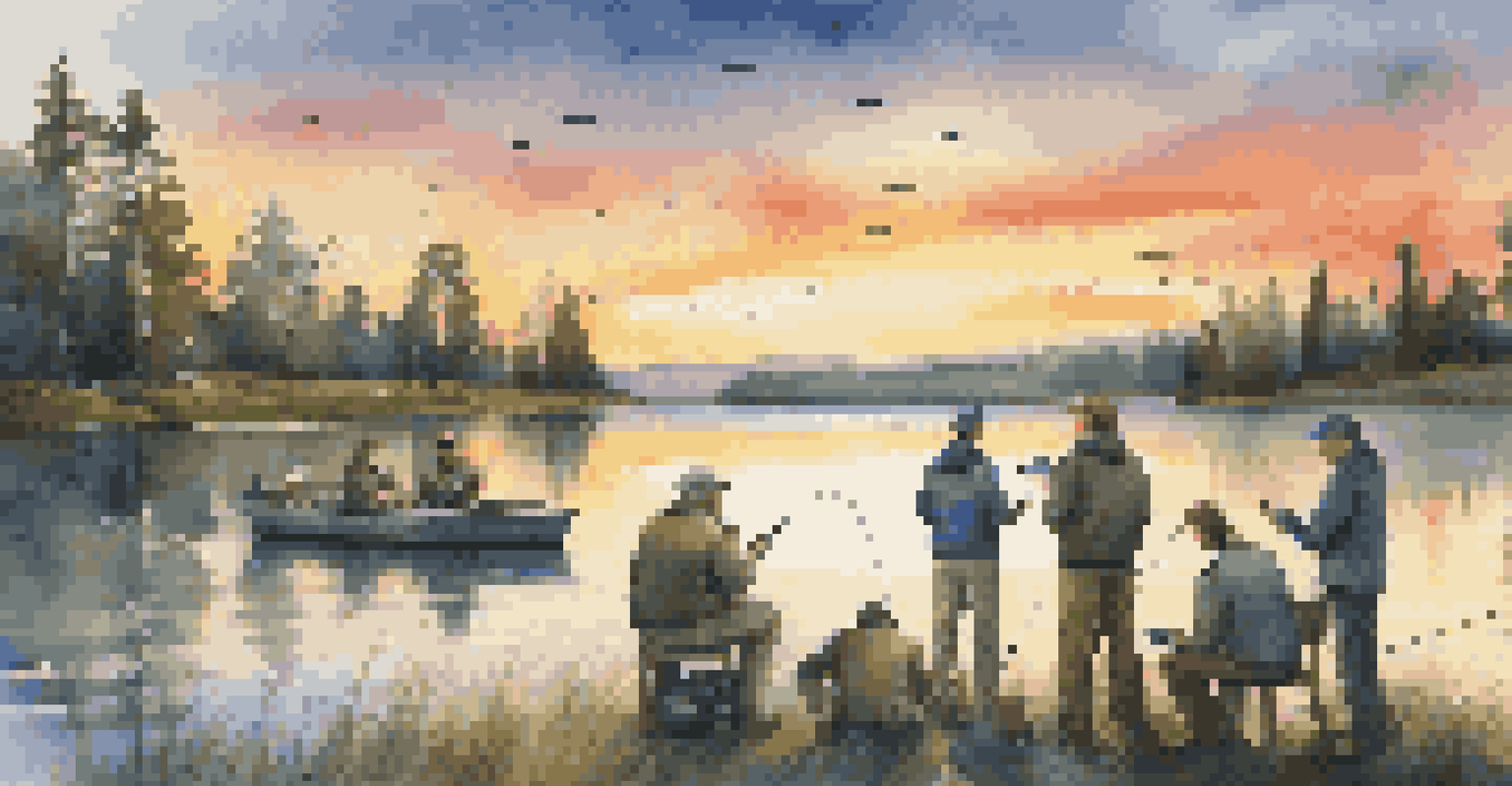How to Identify Local Fish Species: A Beginner's Guide

Understanding the Importance of Local Fish Identification
Identifying local fish species is crucial not just for anglers but for environmental conservationists too. Knowing what fish inhabit your local waters can help maintain biodiversity and promote sustainable fishing practices. Additionally, understanding the types of fish in your area can enhance your fishing experience, making it more rewarding and educational.
The fish is a symbol of wealth and abundance as it is a source of nourishment for the body and soul.
When you can identify local fish, you also gain insights into their habitats and behaviors. This knowledge can improve your fishing strategies, as different species often prefer different environments, depths, and times of day. Furthermore, recognizing local fish can help you avoid unintentionally catching endangered or protected species.
Ultimately, fish identification fosters a deeper connection with the aquatic ecosystem. By learning about the fish around you, you can appreciate their roles in the environment and contribute to their preservation, ensuring that future generations can enjoy local waters as much as you do.
Basic Tools and Resources for Fish Identification
Before diving into fish identification, it’s helpful to equip yourself with some basic tools. A good field guide specific to your region is invaluable, as it provides images and information about local species. Additionally, a smartphone app designed for fish identification can be a handy companion, offering instant access to data and images.

You might also want to carry a camera or smartphone to document any fish you encounter. Taking pictures can not only help you remember what you've seen but can also be useful for seeking help from online communities or local fish enthusiasts. This way, you can share your findings and learn from others’ experiences.
Fish Identification Enhances Experience
Knowing local fish species enriches your fishing adventures and promotes sustainable practices.
Lastly, consider investing in a quality pair of polarized sunglasses. These can help reduce glare on the water's surface, allowing you to see below and spot fish more easily. With the right tools in hand, you'll be well-prepared to start identifying local fish species.
Key Characteristics for Identifying Fish Species
When you're trying to identify a fish, start by observing its size and shape. Fish come in various forms, from elongated bodies like eels to more rounded shapes like trout. Noting these characteristics can significantly narrow down your options as you compare them to your guide or app.
In every walk with nature, one receives far more than he seeks.
Next, pay attention to the color patterns and markings on the fish. Many species have unique colorations that can help distinguish them from similar-looking ones. For example, the vibrant markings on a rainbow trout can set it apart from other trout species, making identification easier.
Lastly, don't forget to look at the fins and tails. The shape, size, and positioning of these appendages can provide critical clues about the fish species. For instance, the distinctive forked tail of a mackerel is a clear indicator, while the rounded tail of a catfish suggests a different lineage altogether.
Habitat: Where to Find Different Fish Species
Understanding where to find specific fish species can greatly aid in identification. Different fish prefer different habitats—some thrive in freshwater lakes, while others inhabit brackish estuaries or the open ocean. Researching the preferred environments of local species can help you know where to look.
For example, if you're searching for bass, you might head to calm, shallow waters with plenty of vegetation. In contrast, if you're hoping to catch trout, you’ll want to target cooler, fast-moving streams. By aligning your fishing location with the habitat preferences of the species you're interested in, you increase your chances of success.
Community Resources Aid Learning
Engaging with local fishing communities and resources can greatly improve your fish identification skills.
Additionally, pay attention to seasonal changes, as fish often migrate depending on the time of year. Some species may be more prevalent during spawning seasons, while others may be found in deeper waters during warmer months. Being aware of these patterns can enhance your local fish identification efforts.
Using Local Knowledge and Community Resources
Engaging with local fishing communities can provide you with invaluable insights into fish identification. Local anglers often have a wealth of experience and can share tips on recognizing species, their habits, and the best fishing spots. Don’t hesitate to ask questions or seek advice from more seasoned fishermen.
You can also participate in local fishing clubs or online forums dedicated to fishing. These platforms not only offer a space to exchange knowledge but can also help you connect with people who share your interests. You might even find local events or workshops focused on fish identification, further enhancing your skills.
Moreover, visiting local aquariums or fish hatcheries can be an excellent way to learn about local species firsthand. Observing fish in a controlled environment allows you to see their characteristics up close, making it easier to identify them later in the wild.
Participating in Citizen Science for Fish Identification
Citizen science initiatives provide a fantastic opportunity for amateur fish enthusiasts to contribute to important research. Many organizations encourage people to report their fish sightings, helping scientists track species populations and distribution. Participating in these programs not only benefits science but also enhances your own identification skills.
By engaging in citizen science, you can learn how to collect data systematically. This usually involves noting the species, size, and location of your catch, which can help reinforce your identification knowledge. Additionally, you may get the chance to collaborate with professionals, gaining insights into the science behind fish conservation.
Citizen Science Supports Conservation
Participating in citizen science initiatives helps track fish populations and fosters a deeper understanding of local ecosystems.
In essence, participating in citizen science can deepen your understanding of local fish ecology while fostering a sense of community and responsibility towards the environment. It’s a win-win for both you as an individual and the aquatic ecosystems you are studying.
Final Thoughts on Fish Identification for Beginners
Identifying local fish species may seem daunting at first, but with practice and the right resources, it can become a rewarding hobby. Remember to start simple, focusing on a few key species before expanding your knowledge. As you become more comfortable, you'll find that your confidence and ability to identify fish will grow.
Stay curious and open to learning. Each fishing trip can be a new adventure full of opportunities to discover different species. Keep your field guide handy, take notes, and don’t be afraid to ask for help from more experienced anglers.

Ultimately, being able to identify local fish species enhances your appreciation for the aquatic world. It connects you to nature and supports sustainable practices, ensuring that our precious water ecosystems thrive for generations to come.